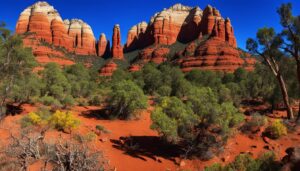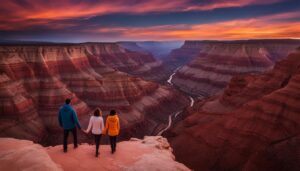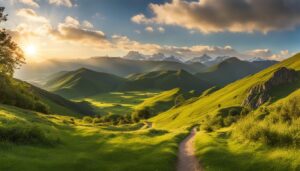Discover the wonders just a short drive from Salt Lake City—the gateway to some of the most breathtaking national parks in the United States. Immerse yourself in the natural beauty of these parks, where over 2,000 stone arches, crimson-colored hoodoos, towering sandstone cliffs, and rugged terrains create a mesmerizing tapestry of landscapes. Feel the thrill of outdoor adventures, from hiking and rock climbing to stargazing and wildlife spotting, promising an unforgettable experience for every explorer. Embark on a journey that transcends the ordinary. Plan your visit to the national parks near Salt Lake City, where adventure, beauty, and the call of the wild converge for an experience like no other.
Overview of Salt Lake City
Before delving into the parks, let’s take a moment to appreciate the city that serves as the perfect starting point for this adventure. Salt Lake City, founded in 1847 by a group of pioneers, has grown into a vibrant metropolis. Its history, intertwined with the Mormon pioneers, adds a unique layer to its cultural tapestry.
Proximity of National Parks
One of the remarkable aspects of Salt Lake City is its proximity to several national parks, each offering a distinct experience. Within a few hours’ drive, you can find yourself surrounded by the unparalleled beauty of Arches, Bryce Canyon, Zion, and Capitol Reef National Parks.
Features of Each National Parks Near Salt Lake City
Arches National Park
Arches National Park, located just a short drive from Salt Lake City, is a geological wonderland that captivates outdoor enthusiasts with its iconic red rock formations. The park spans over 76,000 acres and is home to more than 2,000 natural stone arches, making it an unparalleled destination for those seeking a unique and breathtaking landscape.
Delicate Arch: One of the most recognizable landmarks in the park, Delicate Arch stands as a symbol of Arches National Park. This freestanding natural arch, carved by the forces of erosion, is particularly mesmerizing during sunset, casting a warm, golden hue on the surrounding red rocks.
Landscape Arch: Stretching an impressive 306 feet, Landscape Arch is another must-see wonder in Arches National Park. This delicate and slender arch is the longest natural arch in the park and is a testament to the continuous process of erosion shaping the landscape.
Visitors to Arches National Park can embark on hiking trails that lead to these natural wonders, immersing themselves in the surreal beauty of the red rock formations and expansive desert landscapes.
Bryce Canyon National Park
Bryce Canyon National Park, renowned for its crimson-colored hoodoos, offers a geological spectacle that is nothing short of a marvel. The park, situated in southwestern Utah, is characterized by a series of amphitheaters filled with these unique, tall, and thin rock spires called hoodoos.
Navajo Loop Trail: For an up-close encounter with the hoodoos, the Navajo Loop Trail is a must-explore route. This moderately challenging trail takes hikers through the heart of the Bryce Amphitheater, providing panoramic views of the vibrant rock formations.
The intricate interplay of light and shadow on the hoodoos, especially during sunrise and sunset, creates a magical and ever-changing landscape that photographers and nature enthusiasts find irresistible.
Zion National Park
Zion National Park, known for its towering sandstone cliffs and emerald pools, presents a surreal and awe-inspiring landscape. Located in southwestern Utah, the park is a haven for thrill-seekers and those seeking a connection with nature on a grand scale.
The Narrows: A canyon with walls a thousand feet tall and the Virgin River flowing at its floor, The Narrows offers a unique hiking experience. Adventurous visitors can hike through the narrowest section of the canyon, where the towering walls create an almost mystical ambiance.
Angels Landing: For the ultimate thrill, Angels Landing is a challenging hike culminating in a summit that provides panoramic views of the entire Zion Canyon. The journey involves navigating a steep and narrow ridge, offering an exhilarating experience for those with a taste for adventure.
Capitol Reef National Park
Capitol Reef National Park, situated in south-central Utah, showcases the geological diversity of the region with its rugged terrain and striking rock formations. One of its standout features is the Waterpocket Fold, a nearly 100-mile long warp in the Earth’s crust.
Waterpocket Fold: This geological monocline is a fold in the Earth’s crust that has been exposed by erosion, resulting in a stunning landscape of colorful canyons, domes, and bridges. The Waterpocket Fold provides a fascinating glimpse into the geological forces that have shaped the region over millions of years.
Exploring Capitol Reef National Park allows visitors to witness the dynamic interplay of light and color on the rock formations, creating a visual feast for nature enthusiasts and photographers alike.
Outdoor Activities in National Parks
The national parks surrounding Salt Lake City beckon outdoor enthusiasts with a plethora of thrilling activities that cater to diverse tastes. Whether you’re an avid hiker, a rock climbing enthusiast, a stargazer, or a wildlife aficionado, these parks offer an adventure for every type of explorer.
Hiking and Rock Climbing: The extensive trail systems winding through the parks provide opportunities for both novice hikers and seasoned trekkers. From gentle walks to challenging ascents, the diverse landscapes cater to all skill levels. Rock climbing enthusiasts will find rugged formations offering both exhilarating and challenging climbs.
Stargazing: The clear, unpolluted skies above the national parks create an ideal environment for stargazing. Visitors can witness the celestial wonders and constellations unfold against the backdrop of the dark night sky. Some parks even host astronomy events, providing guided insights into the cosmos.
Wildlife Spotting: The parks are a haven for wildlife, offering glimpses of bighorn sheep navigating rocky terrains, mule deer gracefully grazing, and a myriad of bird species soaring through the skies. Wildlife enthusiasts can embark on guided tours or explore designated viewing areas for optimal observation and photography.
Best Times to Visit the National Parks
Understanding the seasonal variations is crucial for planning a visit that aligns with your preferences and desired activities.
Spring and Fall: These seasons, characterized by mild temperatures, are perfect for outdoor activities. Spring brings blooming wildflowers, while fall showcases vibrant foliage. The moderate weather enhances hiking experiences and allows for comfortable exploration.
Summer: While summer attracts larger crowds, it provides a different charm. Longer daylight hours offer more time for adventures, and warm temperatures make it ideal for water-based activities like river rafting. Be prepared for busier trails and popular attractions.
Winter: Winter transforms the parks into serene wonderlands adorned with snow. While some activities may be limited, snowshoeing and cross-country skiing become popular alternatives. The tranquility of the parks during winter adds a unique and enchanting dimension.
Accessibility and Transportation to National Parks
Reaching these natural wonders is a seamless experience, thanks to Salt Lake City serving as a central hub.
Rental Cars: Renting a car provides the flexibility to explore at your own pace. The well-maintained roads make the journey scenic and enjoyable.
Guided Tours: For those seeking a hassle-free experience, guided tours are available. Knowledgeable guides provide insights into the parks’ history and geology while ensuring a smooth and informative trip.
Accommodations Near National Parks
The area surrounding the national parks offers a range of accommodations to suit diverse preferences.
Camping: For nature enthusiasts, camping under the stars is an immersive experience. Many parks have designated campgrounds, allowing visitors to connect with the great outdoors.
Luxury Resorts: If comfort is a priority, luxury resorts in the vicinity provide a plush retreat after a day of exploration. These resorts often offer stunning views and top-notch amenities.
Wildlife Encounters in the Parks
The national parks teem with diverse wildlife, creating opportunities for captivating encounters.
Bighorn Sheep: Keep an eye out for these majestic creatures navigating steep cliffs with remarkable agility.
Mule Deer: Graceful and abundant, mule deer are a common sight, especially during dawn and dusk.
Bird Species: The parks host a variety of bird species, making them a paradise for birdwatchers. From majestic eagles to colorful songbirds, the avian diversity is awe-inspiring.
Conservation Efforts in National Parks
Preserving the natural beauty of these parks is a collective responsibility.
Ongoing Conservation Efforts: Learn about the ongoing initiatives aimed at maintaining the ecological balance. Participate in organized clean-up events or support local conservation projects to contribute to the sustainability of these pristine landscapes.
Insider Tips for Park Exploration
Make the most of your visit with insider tips that go beyond the ordinary recommendations.
Sunrise Hikes: Start your day with a sunrise hike for a magical experience as the first light paints the landscapes with warm hues.
Lesser-Known Trails: Venture off the beaten path to discover lesser-known trails that offer solitude and unique perspectives of the parks.
Local Cuisine in Salt Lake City
After a day of exploration, indulge in Salt Lake City’s diverse food culture.
International Cuisines: Explore a mix of international cuisines, from authentic Mexican dishes to Asian delicacies, reflecting the city’s cultural diversity.
Regional Specialties: Don’t miss the chance to savor regional specialties, including locally sourced ingredients and flavors unique to the area.
Popular Events in the Region
Beyond the natural wonders, the region hosts various events and festivals.
Local Celebrations: Plan your trip to coincide with local celebrations and festivals. From music events to cultural fairs, these experiences add an extra layer of richness to your visit.
Safety Measures in National Parks
While the parks are awe-inspiring, safety should be a top priority.
Familiarize Yourself with Guidelines: Before embarking on any adventure, familiarize yourself with safety guidelines provided by park authorities.
Essential Gear: Carry essential gear, including a first aid kit, sufficient water, appropriate clothing, and navigation tools.
Weather Preparedness: Be prepared for changing weather conditions. Check forecasts and pack accordingly to ensure a safe and enjoyable experience in the parks.
Conclusion
Embarking on a journey to the national parks near Salt Lake City is an enriching experience. Each park tells a unique story through its geological formations, diverse wildlife, and the spirit of conservation. Whether you’re an avid adventurer or a nature enthusiast, this guide is your key to unlocking the treasures that await you in this picturesque region.
FAQs
Q: Can I visit all the national parks in one trip?
A: While the ambitious idea of visiting all the national parks in one trip is feasible, it’s strongly recommended to allocate sufficient time to each park. This approach ensures a more immersive and meaningful experience, allowing you to truly appreciate the distinct features, activities, and natural wonders that each park has to offer. Rushing through may lead to missing out on the unique charm and essence of each destination.
Q: Are the parks accessible year-round?
A: Yes, the national parks near Salt Lake City are accessible throughout the year. However, it’s essential to consider the seasonal variations that can impact the types of activities available. Spring and fall offer mild temperatures, making them ideal for hiking and outdoor adventures. Summer attracts larger crowds, and certain areas may experience higher temperatures. Winter transforms the parks into serene winter wonderlands, but some activities may be limited. Plan your visit based on your preferences and the experiences you seek.
Q: Are guided tours available?
A: Absolutely! Various guided tours cater to different preferences, ensuring a tailored experience for every visitor. Whether you’re interested in photography-focused excursions to capture the stunning landscapes or seeking family-friendly adventures, guided tours provide insights into the parks’ history, geology, and hidden gems. These tours enhance your visit by offering expert guidance, allowing you to make the most of your time and create lasting memories.
Q: What should I pack for a visit?
A: Packing wisely is crucial for a comfortable and enjoyable visit. Essentials include comfortable clothing suitable for the season, sturdy footwear for hiking, sunscreen to protect against the sun’s rays, an adequate water supply to stay hydrated, and a camera to capture the breathtaking landscapes. Additionally, consider packing a hat, sunglasses, and a small backpack for carrying your essentials during hikes and explorations.
Q: How can I contribute to conservation efforts?
A: Being a responsible visitor, you can actively contribute to the conservation of these pristine natural areas. Participate in organized clean-up events organized by park authorities or local conservation groups. Adhere to the principles of Leave No Trace, minimizing your impact on the environment. Support local conservation initiatives through donations or volunteering. By practicing responsible tourism, you play a vital role in preserving the ecological balance and ensuring that these national parks remain treasures for generations to come.



